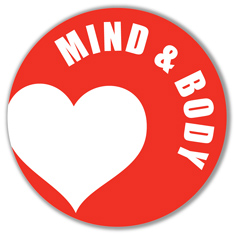 A truly happy person leads a healthy life, balancing mental and physical health. When a person’s mental condition is centered and happy, that person tends to have better health. If someone is fit, they tend to be happier. The body and mind work together to complement each other, with one directly affecting the other. Even the very term disease, indicates the connection between the two. It’s the prefix dis, meaning not and the word ease. Together, they mean not at ease, which could take on the meaning of being mentally uncomfortable, but more commonly means illness.
A truly happy person leads a healthy life, balancing mental and physical health. When a person’s mental condition is centered and happy, that person tends to have better health. If someone is fit, they tend to be happier. The body and mind work together to complement each other, with one directly affecting the other. Even the very term disease, indicates the connection between the two. It’s the prefix dis, meaning not and the word ease. Together, they mean not at ease, which could take on the meaning of being mentally uncomfortable, but more commonly means illness.
The body and mind are connected.
While there are stories from psychologists demonstrating how people display certain physical illnesses from a mental conflict occurring earlier in those people’s lives, you don’t have to search out stories like this to see it in everyday life. I see it all the time with clients. People come in angry and stressed or depressed and upset. As they workout, you can almost see that veil of emotion lifting and their spirits with it. It’s more than that. While staying healthy and working out can lift your spirits, studies also show people who are depressed often have poorer than average health.
Treating both the body and the mind has become important.
Exercise, a healthy diet, adequate sleep and good hydration are important to good health, but so is taking time each day to quiet the mind and thoughtful reflection. Whether you choose meditation or simply take time to review the day’s events, keeping a positive attitude is mandatory to good health. Meditation is nothing more than being in a state of relaxed awareness, allowing your body to rest while letting your mind remain awake, but quiet. More and more studies show that meditation, as part of a program of health, can also reduce the potential for heart disease, anxiety, depression, hypertension and insomnia.
Eating healthy feeds both the body and the mind, just as exercise helps both.
Eating should be a pleasure, but to many people it’s nothing more than a habit. I see it every day in restaurants, people shoveling food in their mouths, barely chewing and swallowing. They barely taste the food and are on to the next bite. When you engage in mindful eating, you’re savoring each bite, looking for the subtle blends of tastes and enjoying each combination. While we recommend choosing a rainbow of colors when creating a meal, the Ayurvedic method is to include six tastes: sweet, pungent, salty, sour, bitter, and astringent. Astringent, bitter and pungent tastes are anti-inflammatory and include foods like ginger, peppers, mushrooms and tea. Many people’s diets include just sweet, sour and salty.
- The mind can produce chemicals that boost the immune system, with physical exercise burning off the hormones of stress that can slow it.
- Your mental attitude not only can change the course of illness, it can also boost the benefits of exercise and help you get in shape faster.
- Building good friendships helps both the body and the mind. Studies show that people who have a more social existence live longer.
- If you want to be healthier and live longer, smile more and laugh. Studies show that laughter truly can be the best medicine.
 13609 Central Ave, Ste E Chino, CA 91710
13609 Central Ave, Ste E Chino, CA 91710
